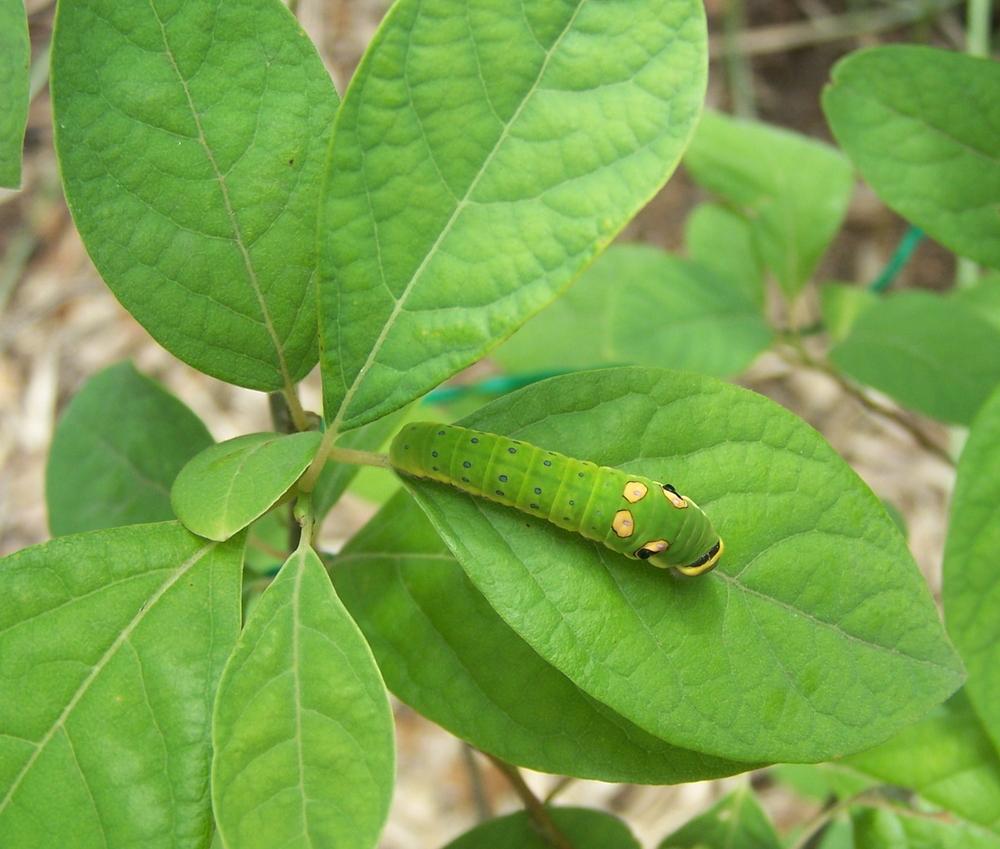We usually think first of flowers when we plan ways to attract butterflies to our landscapes. And they are indeed key to attracting adult butterflies. But it's just as important to provide food for that less glamorous stage of a butterfly's life cycle, the caterpillar. For without this larval stage, of course, there would be no lovely adults flitting from blossom to blossom. Including plants on which the caterpillar stage can feed in your landscape is just as important as offering blossoms for nectar-feeding adult butterflies.

Butterflies (and moths) are insects that go through a complete metamorphosis in the course of their life cycle, which means that the immature or larval stage of the insect looks completely different from the adult form. The first step in the life cycle is the egg, laid by the female butterfly on or near a suitable host plant to nourish the caterpillar that will hatch from it. Caterpillars come in a wide variety of sizes, colors, and characteristics like horns, spines, and hairs, depending on the species. But they all have one thing in common -- they are made for eating. Their mission is to eat and grow, going through usually four or five stages, or instars, shedding their outer skin and growing bigger with each instar. When the last instar is reached, the caterpillar stops eating and changes into a pupa, which looks completely different from the caterpillar stage. In butterflies, this is called a chrysalis. (Some moth caterpillars spin a web of silk -- a cocoon -- around their pupa.)
It is during the pupal stage that the butterfly or moth takes on its adult form. When the pupa is mature, it splits open to reveal the fully formed winged adult -- one of the most amazing transformations in nature. In many species, the change from pupa to adult takes about two weeks, but some species may spend the winter as a pupa, with the adult emerging in spring. Some species may produce multiple generations in a year.
Choosing Host Plants
So what can you plant to keep hungry caterpillars happy? Suitable host plants will vary with the species of butterflies that are found in your region of the country, so doing a little research (there's lots of information available online) is the first step in deciding what to plant. The caterpillars of some species have quite broad tastes. For example, caterpillars of the painted lady butterfly, found throughout the country, will dine on over 100 different kinds of plants, from thistles to hollyhocks. Eastern tiger swallowtail caterpillars, found commonly east of the Rockies, will happily feed on the leaves of cherry trees, tulip trees, aspens, birches, lilacs, hornbeams, willows, ash, and spicebush. Not only does a wide dietary range give you lots of choices of suitable plants, it also spreads the caterpillar chomping around, making it less likely you'll see noticeable feeding damage to your landscape plants.
Other caterpillars, however, are much choosier. While fritillary butterfly adults will sip nectar from a variety of flowers, the caterpillars of the great spangled fritillary will feed only on violets, and those of the gulf fritillary only on passionflowers! The spicebush swallowtail caterpillar's preference runs just to spicebush (Lindera benzoin) and sassafras. Monarch butterfly caterpillars will feed only on milkweed plants. To attract the pipevine swallowtail, plant Dutchman's pipe vine (Aristolochia macrophylla), it's favored caterpillar food.
Many plants we deem weedy are host to the caterpillar stage of some lovely butterflies (as well as nectar-producing plants), so try to let a corner of your landscape stay undisturbed. A brushy or woody area will also offer overwintering spots to various species.
Accommodating Caterpillars in the Garden
Don't be overly concerned about caterpillars chewing on your prized garden plants. Many species feed on trees and shrubs, which can generally tolerate their feeding without a great deal of harm, either physical or aesthetic. And if you limit or avoid the use of pesticides, even organic ones, you will not only keep your butterflies-in-waiting safe, you'll encourage healthy populations of the beneficial predator and parasitoid insects that help to maintain a natural balance of caterpillars in the garden. If there are some caterpillar species that become problematic, like tomato hornworms in the vegetable garden, handpick them or use a targeted insecticide like Bt (a microbial pesticide that just affects caterpillars) applied only to the infested plants. This way you'll keep from harming the other caterpillars you wish to encourage.
A beautifully colored caterpillar that you may encounter in your vegetable garden and wish to nurture is the black swallowtail. Young caterpillars are mostly black with a white ″waistband,″ but older ones display an eye-catching pattern of green and black stripes accented with yellow dots. This colorful caterpillar nibbles on parsley, dill, celery, and other members of the Carrot (Apiaceae) family. Plant a few extra parsley or dill plants in your garden each season, and if this caterpillar shows up, simply move it to one of your extra plants so that you can enjoy both your harvest and beautiful butterflies.
Susan Littlefield is the National Gardening Association's horticultural editor.